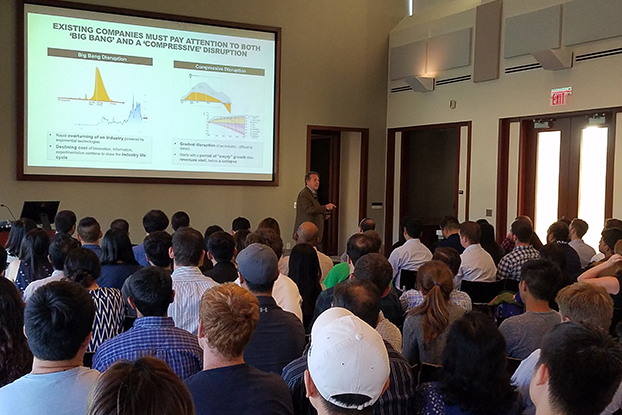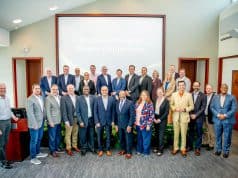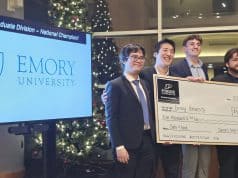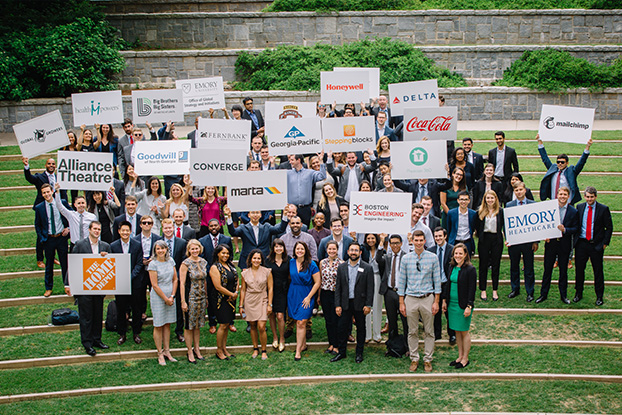 With the topic of digital trends and the recent announcement of business consultancy Accenture expanding its operations in Atlanta, it was no surprise Accenture Digital’s Group CEO Mike Sutcliff spoke to a full crowd during Professor of ISOM Benn Konsynski’s Appcology class. In addition to Konsynski’s students, the lecture was opened up to the broad community, including EMBAs and MSBA.
With the topic of digital trends and the recent announcement of business consultancy Accenture expanding its operations in Atlanta, it was no surprise Accenture Digital’s Group CEO Mike Sutcliff spoke to a full crowd during Professor of ISOM Benn Konsynski’s Appcology class. In addition to Konsynski’s students, the lecture was opened up to the broad community, including EMBAs and MSBA.
In September, Accenture announced its expansion to Atlanta, which will take place over the next few years and create more than 800 tech-related jobs.
The company focuses on serving clients that are the largest 1,000 institutions in the world, including nonprofit, government, commercial and more.
“What we try and do is work on the problems that matter to them,” Sutcliff said.
Sutcliff and his team apply digital technologies, such as social networks, mobility, interactive analytics and cloud, to create change.
“Digital is really thinking about things and how they could work,” Sutcliff said. “Digital is about looking at that picture and asking, ‘What can you do with it?’ Whether it’s a technology disrupter or the business disrupters and what are the new business models that you could create if you wanted to go be disruptive in an industry.”
Over the past decade, the world of marketing has continued to change. Sutcliff said what was learned 10 years ago is irrelevant today, that the industry has moved from broad-brush marketing with 80 percent art and 20 percent science to personalized marketing, which is 80 percent science and 20 percent art.
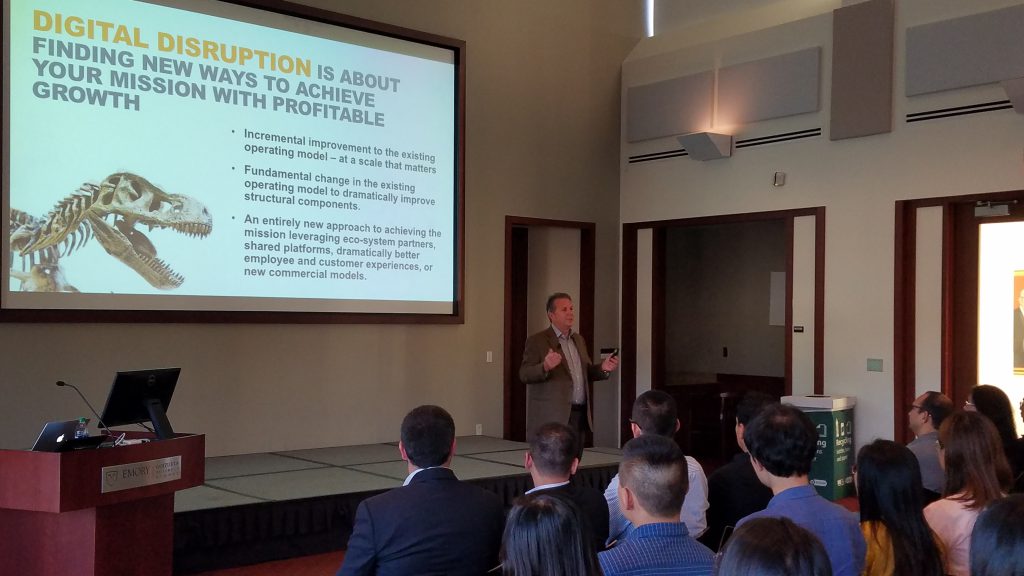
“This doesn’t mean the art is not important,” Sutcliff said. “It absolutely is important and a differentiator, but if you’re not working with science in the world of marketing today, you’re just dead on arrival. Marketers had to use technology as an enabler, and now we can predict lots of activity and take action to influence your behavior before you even know what your intention is. In the world of marketing, it’s making a huge difference.”
Accenture’s group called Pure Inside of Accenture Interactive works specifically on design experiences. However, Sutcliff said it’s not just about making beautiful journey maps, it’s about making journey maps that understand all of the details.
“The most beautiful journey map in PowerPoint is absolutely worthless when you’re trying to scale it if you don’t have the rest of the picture,” Sutcliff said. “It’s designing a journey map that actually understands where the exceptions are, where the gaps in service are going to be and how the organization is going to respond when the supply chain breaks.”
After working with a large ecosystem of partners, Sutcliff and his team remind clients that it’s not just about having the digital strategy in place.
“It’s about being digital at the core of the company,” Sutcliff said. “It’s about making sure that you’re thinking about your employees, customers, business model, technology, data, the ecosystem, and you’re thinking about how to bring it all back together.”


